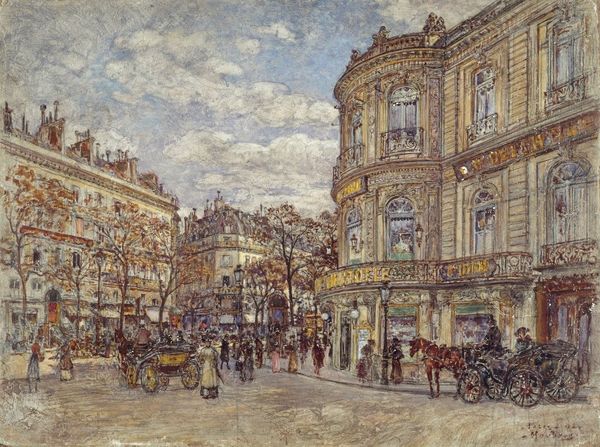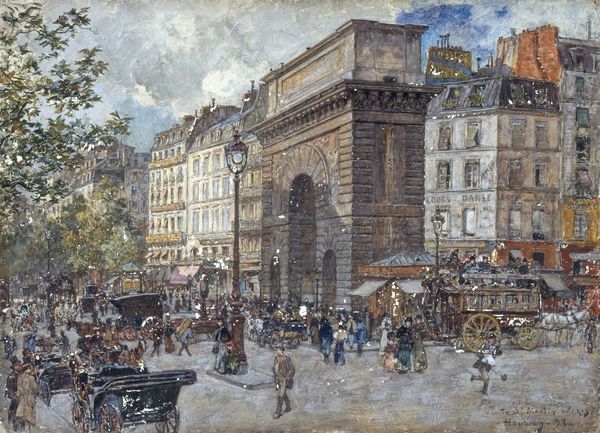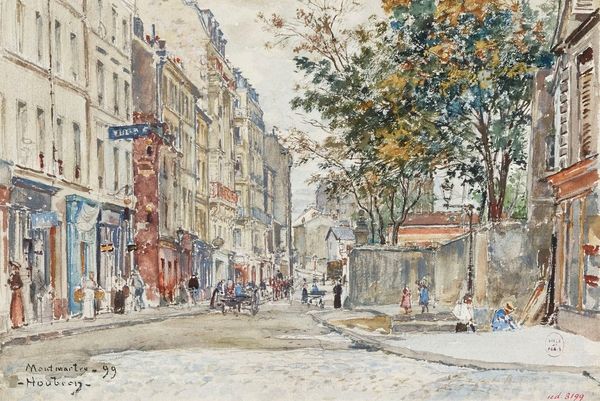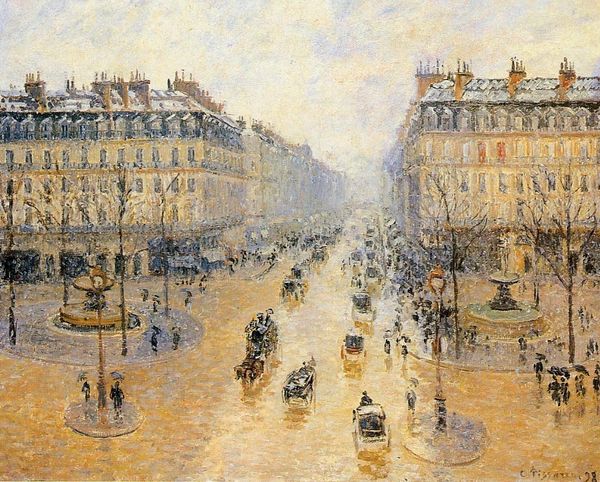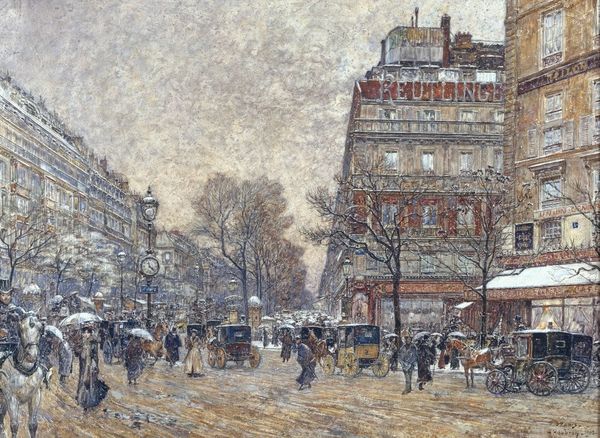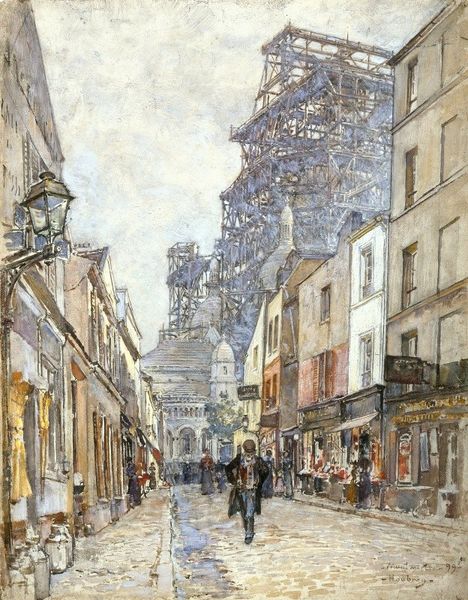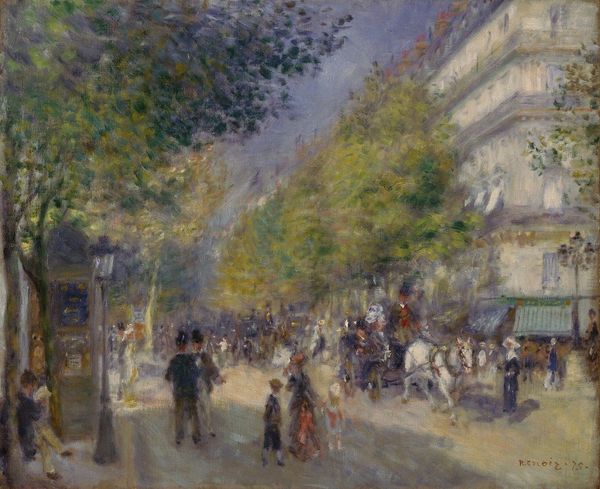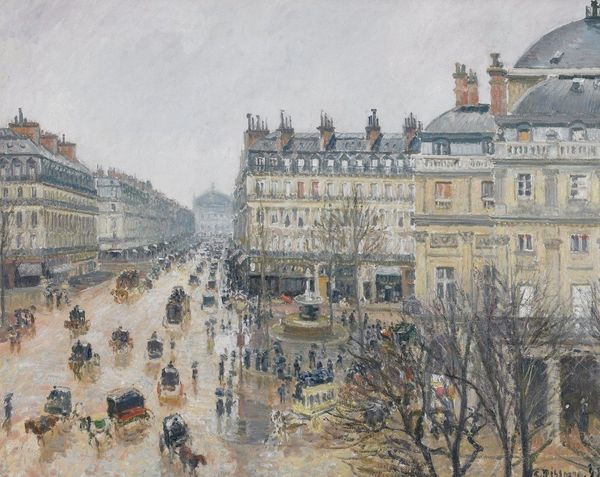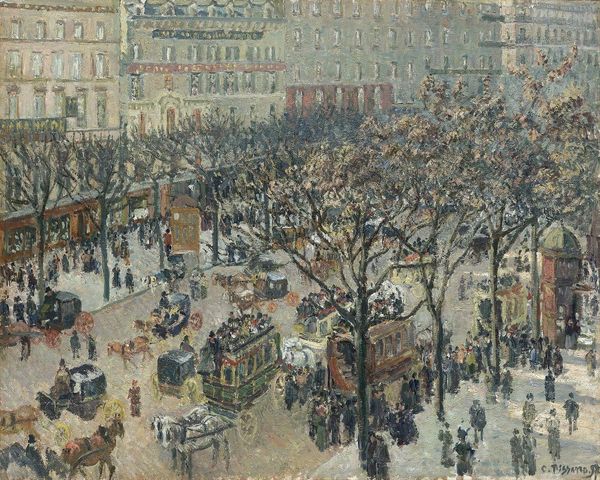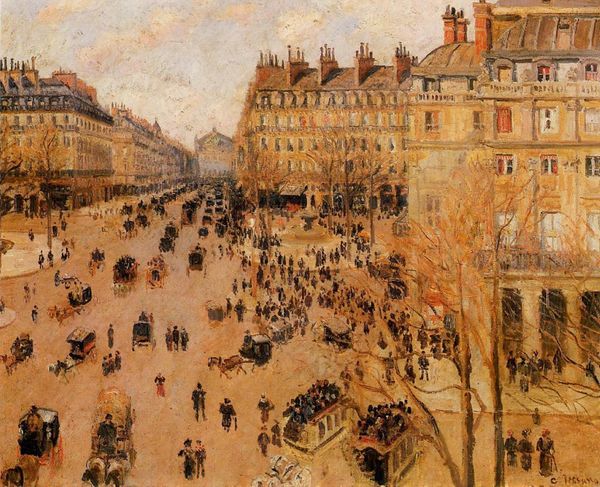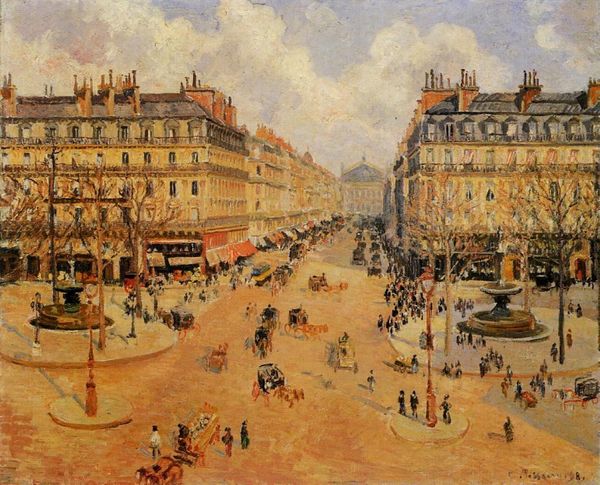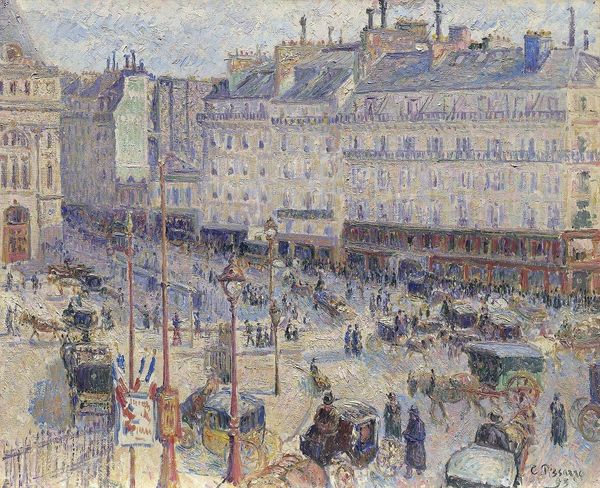
Copyright: Public Domain: Artvee
Editor: This is Frédéric Houbron’s “Le boulevard des Italiens, aspect du matin,” painted in oil sometime between 1902 and 1903. It's such a bustling city scene, but it feels muted, almost dreamlike, with the hazy light. What stands out to you in this painting? Curator: I’m drawn to consider the materiality of this piece. The oil paint, applied in such a way, suggests a specific interaction with the burgeoning industrial world. Think of the production of pigments themselves - the shift from hand-ground to commercially produced paints, readily available. How did this ease of access impact the working methods of plein-air painters like Houbron? Editor: That's an interesting perspective. I hadn't considered the actual paint itself. Does the availability of materials then cheapen the art or make the artist a sort of consumer in and of themselves? Curator: That’s the question, isn't it? This commercialization, this consumption, impacts artistic labor. The readily available materials affect the immediacy of production; however, that access and impact allow the artist to shift their focus from production toward their product or even their representation. Editor: So, you're saying the artist is still vital because of how he channels these new materials and social forces? It isn't about the materials making the art. It’s the hand and intention, the decisions around material consumption that matter. Curator: Precisely! By examining these material conditions, we gain insight into the cultural and economic forces shaping artistic production. The city itself transforms with its industrial capacity, an ever growing process in art and society. Editor: That's really opened my eyes to a new way of viewing art! Considering the material production as an influence in the final artistic intention and its connection with industrial advances… it’s fascinating. Curator: It reframes our understanding. We aren’t simply looking at a cityscape but an index of a changing society and its own changing labor.
Comments
No comments
Be the first to comment and join the conversation on the ultimate creative platform.
